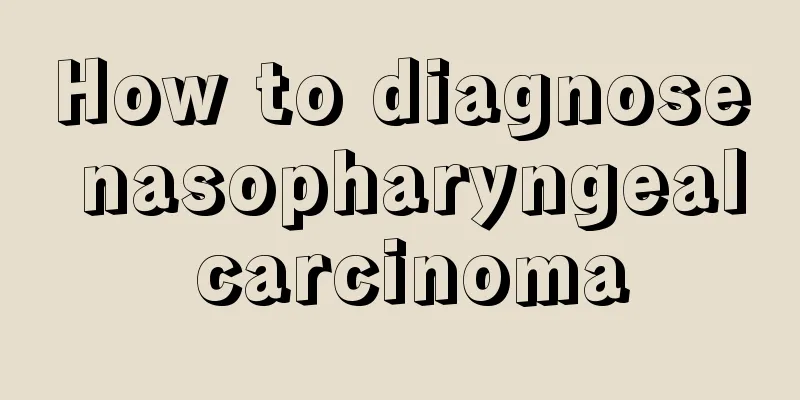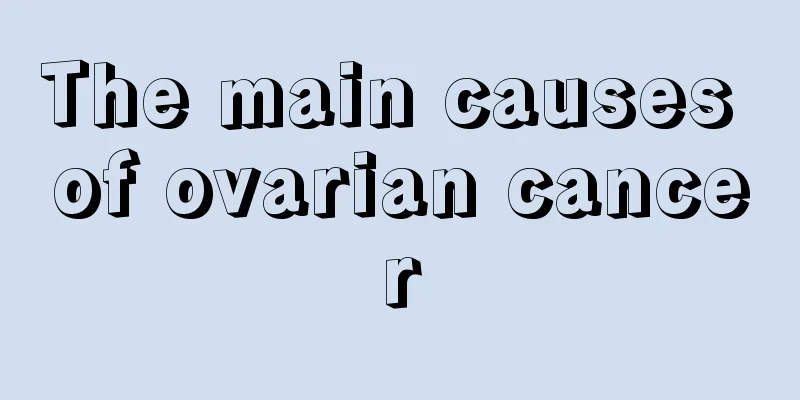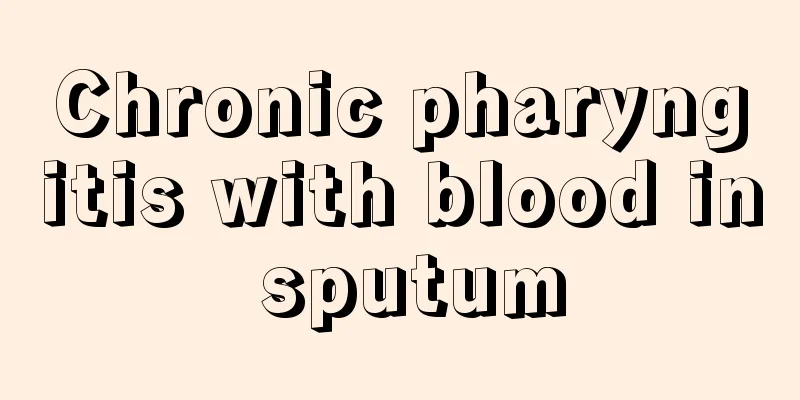How to diagnose nasopharyngeal carcinoma

|
With the progress of the times, people's living standards are getting higher and higher. While you are enjoying life with your family, have you ever thought about paying attention to some cancers? Although modern technology is advanced, due to the hidden nature of nasopharyngeal cancer, the symptoms of early cancer patients are extremely unclear. Clinically, most nasopharyngeal cancer patients have obvious symptoms in the middle and late stages. Here, we remind our friends that even if you are not sick, you should pay attention to it. Even if you don't consider yourself, you should consider your family. The health of your family is your own health. 【diagnosis】 The following checks should be done: (i) Anterior rhinoscopy: After the nasal mucosa has been retracted, the posterior nasal cavity and nasopharynx can be viewed through the anterior rhinoscopy, and tumors that have invaded or are adjacent to the nostrils can be detected. (ii) Indirect nasopharyngeal endoscopy is simple and practical. Each wall of the nasopharynx should be examined in turn, with attention paid to the posterior wall of the nasopharyngeal roof and the pharyngeal recesses on both sides. The corresponding parts on both sides should be compared and observed. Any asymmetric submucosal protrusions or isolated nodules on both sides should be paid special attention. (III) Fiberoptic nasopharyngoscopy During fiberoptic nasopharyngoscopy, 1% ephedrine solution can be used to astringe the nasal mucosa and expand the nasal passages. Then 1% dicaine solution can be used to anesthetize the nasal passages. Then the fiberscope can be inserted from the nasal cavity, and the microscope can be pushed forward while being observed until it reaches the nasopharyngeal cavity. This method is simple and the mirror is well fixed, but the observation of the posterior nasal cavity and the anterior wall of the roof is not satisfactory. (IV) Neck biopsy For cases that have not been diagnosed by nasopharyngeal biopsy, neck mass biopsy can be performed. Generally, it can be performed under local anesthesia. During the operation, the earliest solid lymph node should be selected, and the capsule should be removed as a whole. If excisional biopsy is indeed difficult, a wedge-shaped biopsy can be performed at the mass. When removing tissue, a certain depth must be maintained, and squeezing should be avoided. At the end of the operation, the surgical field should not be sutured too tightly or too densely. (V) Fine needle aspiration This is a simple, safe and efficient method for tumor diagnosis, which has been highly recommended in recent years. For patients suspected of cervical lymph node metastasis, fine needle aspiration can be used to obtain cells first. The specific method is as follows: 1. Nasopharyngeal tumor puncture: Use a No. 7 long needle connected to a syringe. After oropharyngeal anesthesia, insert the needle into the tumor substance under an indirect nasopharyngeal endoscope, draw the syringe to create negative pressure, and move back and forth twice in the tumor. Apply the extract on a slide for cytological examination. 2. Fine needle aspiration of neck mass: Use a No. 7 or No. 9 needle connected to a 10 ml syringe. After local skin disinfection, select the puncture point, insert the needle along the long axis of the tumor, aspirate the syringe and move the needle back and forth in the mass 2 to 3 times, and take out the aspirate for cytology or pathology examination. (VI) EB virus serological test Currently, the immunoenzymatic method is widely used to detect the titers of IgA/VCA and IgA/EA antibodies of EB virus. The former has a higher sensitivity and a lower accuracy; the latter is just the opposite. Therefore, for those suspected of nasopharyngeal carcinoma, it is advisable to test both antibodies at the same time, which is helpful for early diagnosis. For cases with IgA/VCA titer ≥1:40 and/or IgA/EA titer ≥1:5, even if there is no abnormality in the nasopharynx, exfoliated cells or biopsy should be taken from the site where nasopharyngeal carcinoma is prone to occur. If the diagnosis is still not confirmed for a while, regular follow-up should be performed, and multiple biopsy examinations should be performed if necessary. (VII) Nasopharyngeal lateral radiographs, skull base radiographs and CT examinations Every patient should be routinely examined with nasopharyngeal lateral radiographs and skull base radiographs. If there is suspected invasion of the paranasal sinuses, middle ear or other parts, corresponding radiographs should be taken at the same time. Units with conditions should perform CT scans to understand the local extension, especially the infiltration range of the parapharyngeal space. This is extremely important for determining the clinical stage and formulating treatment plans. (VIII) Type B Ultrasound Examination Type B ultrasound examination has been widely used in the diagnosis and treatment of NPC. It is simple, non-invasive and well accepted by patients. In NPC cases, it is mainly used to examine the liver, cervical, retroperitoneal and pelvic lymph nodes to understand the presence of liver metastasis, lymph node density, and cysticity. (IX) Magnetic resonance imaging examination: Magnetic resonance imaging (MRI) can clearly show the various layers of the skull, cerebral sulci, gyri, gray matter, white matter, ventricles, cerebrospinal fluid ducts, blood vessels, etc. The SE method can be used to display T1 and T2 extended high-intensity images to diagnose nasopharyngeal carcinoma, frontal sinus cancer, etc. The above is an introduction to "How to diagnose nasopharyngeal carcinoma?" When the above symptoms appear, the patient should go to a regular hospital for treatment. Early detection and early treatment can effectively cure nasopharyngeal carcinoma. People who are related to the pathogenic factors of nasopharyngeal carcinoma are advised to take preventive measures against nasopharyngeal carcinoma. If you have other questions about nasopharyngeal carcinoma, please consult our experts online or call for consultation. Nasopharyngeal cancer http://www..com.cn/zhongliu/bya/ |
<<: What are the prevention methods for nasopharyngeal cancer
>>: What is the chemotherapy method for nasopharyngeal carcinoma
Recommend
The effect of magnetic moxibustion
Magnetic moxibustion is also a treatment method d...
How to treat knee wear?
After suffering from knee joint wear, patients ge...
A brief discussion on commonly used treatments for female breast cancer
Breast cancer is a common malignant tumor in wome...
Exercise amount for patients with esophageal cancer
How much exercise should patients with esophageal...
To prevent and treat ovarian cancer, we must focus on early detection
In order to detect ovarian malignant tumors early...
Will drinking beer make you fat?
Alcohol is common to us. There are many types of ...
Treatment methods for common complications of artificial anus surgery
With the improvement of medical technology, the s...
Is biological therapy effective for lung cancer metastasis after surgery?
Metastasis after lung cancer surgery is generally...
Reasons for the formation of fat on both sides of the lower back
The fat formed on both sides of the lower back gi...
Can moldy Cordyceps still be eaten
Cordyceps sinensis is a high-end Chinese medicina...
How to grasp the best time to treat lung cancer? You should know these common sense about lung cancer treatment
For lung cancer, people should pay attention to g...
Can cervical spondylosis cause rib pain?
Cervical spondylosis is a disease that is not unf...
Why is there white stuff on armpit hair
In the summer, people sweat more and some problem...
What are the early symptoms of pancreatic cancer
Early symptoms of pancreatic cancer include abdom...
Why does back massage cause sha
Being in a state of fatigue for a long time will ...









